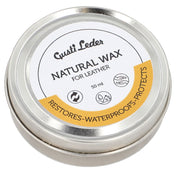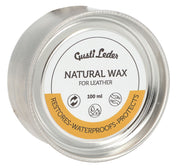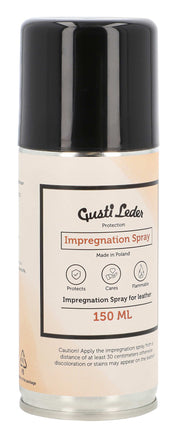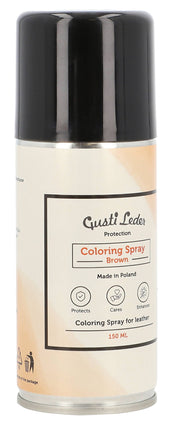Vegetable tanning general
Leather tanned with vegetable tanning agents is called vegetable leather. It is also referred to as vegetable-tanned leather, tanned leather, or old-tanned leather. For several centuries, vegetable tanning was the predominant tanning method. Today, only 10-12% of all leather is preserved using vegetable tanning.
Oak and spruce bark, tara pods, olive leaves, quebracho wood, or mimosa bark are used to tan the leather. The active compounds found in these plants are called "tannins." They are produced and stored by the plants to ward off predators. Up to 300 plant species worldwide are capable of producing these active compounds. At Gusti Leder, all products in the nature range are tanned with the bark of the babul tree.

Types of vegetable tanning
Vegetable tanning is further divided into two different types: pit tanning and barrel tanning. With pit tanning, which takes significantly longer, the leather takes 20-30 months to complete the entire process. The hides are pre-tanned in 6-18 pits in the "dyeing process" and then placed in the "sinking" or "batch" process. Barrel tanning, which only takes a few days, uses a more concentrated broth and the mechanical movement of the barrel to preserve the hides. To accelerate pit tanning, it is sometimes combined with barrel tanning. However, due to the time factor, barrel tanning is preferred for the majority of natural leather tanning.

Properties of tanned leather
Tanning with vegetable tanning agents is generally considered more expensive than its related method, chrome tanning. This is primarily due to the fact that up to 30 kg of bark or 20 kg of fruit is required to tan a single hide. The properties of the finished natural leather depend on the acidity of the tanning broth. Acidic tanning broths, combined with a sufficiently long tanning time, can produce a relatively strong leather product. Softer leather, however, is obtained with sweet tanning broths.

Coloring of vegetable-tanned leather
The characteristic color of natural leather is brown or tan. Factors such as light, humidity, and oiling can influence the color of undyed leather. The moister and more oily the leather, the darker it is. Conversely, the drier the leather, the lighter it becomes. Therefore, you should regularly treat your vegetable-tanned leather products with appropriate care products.

Learn more about vegetable tanning in this video:
additional sources (accessed: 12.12.2018)
- lederpedia(dot)de/lederherstellung/tanbung/pflanzeliche_tanbung_tanning_verfahren_und_durchführung
- leder-info(dot)de/index.php/Vegetable_tanned_leather
- lederzentrum(dot)de/wiki/index.php/Vegetabile_Gerbung
- lederpedia(dot)de/lederherstellung/tanbung/pflanzeliche_tanbung_mit_tanbstoffe_und_extrakte





